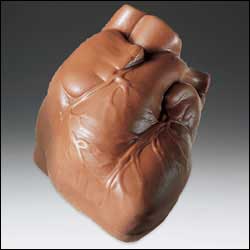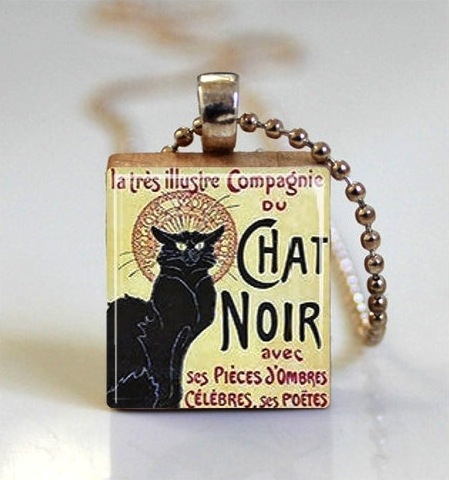 The death in January 2012 of Reginald Hill, at the age of 75, has robbed crime fiction of a towering figure, one of the outstanding British mystery writers of the past half century.
The death in January 2012 of Reginald Hill, at the age of 75, has robbed crime fiction of a towering figure, one of the outstanding British mystery writers of the past half century.
Reg—as he was universally known—will be remembered most widely for his series of novels featuring “Mid-Yorkshire’s finest,” that splendid odd couple of cops, Andy Dalziel and Peter Pascoe. They made their debut in Reg’s first published novel, A Clubbable Woman, which was published under the Collins Crime Club imprint back in 1970. Incidentally, throughout his long career, Reg remained with the same publisher and same literary agent. He was also married to Pat (her maiden name was Patricia Ruell, hence one of his pseudonyms, Patrick Ruell) for more than 50 years. Nobody could deny that Reg epitomized loyalty.
Reg’s mother was a detective fiction fan, but in his early days, most British crime writers were based in London and the Home Counties. He came from a perhaps unglamorous background—his father was a professional soccer player for Hartlepool United long before footballers became highly paid—but hard work and a sharp mind took him to St. Catherine’s College, Oxford, and he later pursued a career in academe. He tried his hand at poetry, and one or two of his poems reflected his interest in crime, before he tackled a novel and embarked on a path as a pioneer of realistic, high-quality crime fiction written, and usually set, in the North of England.
Fell of Dark was a thriller set in the Lake District which he wrote before A Clubbable Woman, although it was published after that book. From then on, Reg got into a rhythm, alternating between his main series and other books, and he believed strongly that varying his approach in this way helped keep his series fresh. Inevitably, the success of the Dalziel and Pascoe books led to pressure to produce them one after another, but he did his best to resist the conveyor belt approach—not because he was dissatisfied with the series, but because he was determined not to compromise his standards and slip into a formula.
He was astonishingly prolific, producing no fewer than 17 novels in his first decade as a published writer, while holding down a job as a lecturer in a college that provided him with background for the second Dalziel and Pascoe book, An Advancement of Learning. The switch of settings (their first appearance concerned a case involving a Yorkshire rugby club, their second the comparatively genteel academic world) reflected the contrast in the two men’s natures. Dalziel was rough and ready, coarse and fat—yet a brilliant detective who was also capable of great wisdom. Pascoe was the sensitive liberal, married with a small child, and sometimes shocked by his boss’ behavior and attitudes. Reg readily acknowledged that, up to a point, the characters reflected contrasting strands of his own personality. He was an erudite and cultured man, but he was also keen on rugby and the outdoor life, and enjoyed a belly laugh as much as a subtle shaft of wit.
 I first met Reg and Pat at the inaugural meeting of the Northern Chapter of the Crime Writers’ Association, at Boroughbridge in North Yorkshire in 1987. At that time, I was working on my first novel, and was eligible for membership only on the strength of nonfiction that I’d published. I didn’t know any crime writers, and approached that meeting with much trepidation. But I was lucky: the people there could not have been kinder to me. It was a small gathering—Reg dubbed us “the few”—but it included not only Reg and Pat, but another doyen of the genre who would, like Reg, go on to win the CWA Cartier Diamond Dagger, Robert Barnard, and his wife Louise, as well as Peter Walker, whose books sourced Heartbeat, one of the most commercially successful British television series of the past 20 years, and Peter and Margaret Lewis, distinguished biographers of Eric Ambler and Ngaio Marsh, respectively. All very memorable and exciting for a writer (and passionate crime fan) at the start of his career.
I first met Reg and Pat at the inaugural meeting of the Northern Chapter of the Crime Writers’ Association, at Boroughbridge in North Yorkshire in 1987. At that time, I was working on my first novel, and was eligible for membership only on the strength of nonfiction that I’d published. I didn’t know any crime writers, and approached that meeting with much trepidation. But I was lucky: the people there could not have been kinder to me. It was a small gathering—Reg dubbed us “the few”—but it included not only Reg and Pat, but another doyen of the genre who would, like Reg, go on to win the CWA Cartier Diamond Dagger, Robert Barnard, and his wife Louise, as well as Peter Walker, whose books sourced Heartbeat, one of the most commercially successful British television series of the past 20 years, and Peter and Margaret Lewis, distinguished biographers of Eric Ambler and Ngaio Marsh, respectively. All very memorable and exciting for a writer (and passionate crime fan) at the start of his career.
From then on, Reg offered me a great deal of encouragement. He named me in a magazine interview as the most promising new writer he’d come across, and he readily agreed to contribute a short story to the first anthology that I edited. This was Northern Blood, which members of the Northern Chapter put together in 1992. We shared a love of short stories, and Reg contributed to many of the anthologies that I edited in later years. “On the Psychiatrist’s Couch,” included in Whydunit?, won the CWA Short Story Dagger, an award he’d won once before. “Game of Dog,” another superb tale, was his contribution to the CWA’s Golden Jubilee anthology, and he allowed me to reprint the brilliant “The Rio de Janeiro Paper” in Crime in the City. Most recently, he wrote the utterly absorbing “Where Are All the Naughty People?” for Original Sins. Despite the many calls on his time, he never once failed to respond to a request for a story—not offering something competent yet ordinary pulled from the bottom drawer, but stories that were original and enormously enjoyable. He also found time to write a wonderful introduction to Where Do You Find Your Ideas?, my own gathering of short stories.
His friends and fans were naturally delighted when news came that Dalziel and Pascoe would be seen on television. The books were to be brought to the small screen by Yorkshire Television, which seemed ideal. Anticipation turned to anxiety when it emerged that the comedians Hale and Pace had been cast in the lead roles. Many would say that, even as comedians, Hale and Pace were not really in the first division—possibly not in the second division, either. And as actors….
At a conference in Brighton when the first episode was being made, the Hills confided their doubts. But still one hoped that the adaptation of A Pinch of Snuff—a story with an unorthodox and elaborate plot—would be a success.
The Northern Chapter of the CWA has, ever since that very first meeting, been a convivial and cohesive group, and as well as regular lunches, members have often organized weekend get-togethers in pleasant parts of the region. Reg and Pat were responsible for setting up some of the best of them and I vividly remember a weekend at a Windermere hotel which coincided with the first showing (on a Saturday evening but scheduled at a suspiciously late hour) of the Hale and Pace interpretation of A Pinch of Snuff. Reg made it quite clear that we should all be drinking with him at the bar rather than sneaking up to our rooms and watching the show on the telly. But when we finally returned home and saw the recordings, our worst fears were realized.
 Luckily, Reg managed to terminate his contract with Yorkshire Television, and entered into a new deal with the BBC, who engaged high-quality scriptwriters such as Alan Plater and Malcolm Bradbury and cast two fine actors, Warren Clarke and Colin Buchanan, in the key roles. Reg invited me to the screening for the press at the Royal Society for the Arts in London, and I took the day off work to travel down: the occasion was great fun, and it was immediately obvious that the BBC had got the characters and story lines right. The rest is history: Dalziel and Pascoe became a fixture on British screens for years and also enjoyed popularity overseas. But this success, very welcome as it was, did not affect Reg. He regarded what happened on the TV as wholly separate from what happened in the books and he wanted to focus on continuing to write the best novels of which he was capable without distraction. Much as he admired the actors’ work, he once said he’d stopped watching the later series, which were no longer based on his own books.
Luckily, Reg managed to terminate his contract with Yorkshire Television, and entered into a new deal with the BBC, who engaged high-quality scriptwriters such as Alan Plater and Malcolm Bradbury and cast two fine actors, Warren Clarke and Colin Buchanan, in the key roles. Reg invited me to the screening for the press at the Royal Society for the Arts in London, and I took the day off work to travel down: the occasion was great fun, and it was immediately obvious that the BBC had got the characters and story lines right. The rest is history: Dalziel and Pascoe became a fixture on British screens for years and also enjoyed popularity overseas. But this success, very welcome as it was, did not affect Reg. He regarded what happened on the TV as wholly separate from what happened in the books and he wanted to focus on continuing to write the best novels of which he was capable without distraction. Much as he admired the actors’ work, he once said he’d stopped watching the later series, which were no longer based on his own books.
Dalziel and Pascoe, the second attempt at a British TV
series based on HIll’s novels, was a solid hit. It first
aired in 1996 and ran for 12 series. Above: Dalziel
(Warren Clarke) and Pascoe (Colin Buchanan). © BBC
As a result of this commitment to continuing quality in his own work, and an absolute refusal to compromise on standards, his books became even better as the years passed. He experimented regularly, at one point sending Dalziel and Pascoe into space in One Small Step, as well as belatedly recording their very first encounter in “The Last National Serviceman.” Bones and Silence was a worthy winner of the CWA Gold Dagger but some of his other titles were equally impressive. The stunningly clever Dialogues of the Dead is one example, while its followup, Death’s Jest-Book, is another. Recalled to Life, On Beulah Height, and Pictures of Perfection are among my other favorites. One of his books—I cannot name it for fear of spoiling the pleasure of those who haven’t read it yet—tells you the name of the culprit in the first paragraph. But the clue is so ingeniously concealed that it would take an especially astute reader to spot it. Reg Hill believed in strong and intricate plotting, and at times his cleverness would have had Agatha Christie gasping in admiration.
His non-series books are sometimes underestimated, and this is a pity. The Only Game is a gripping thriller with a cunning plot twist, while The Stranger House was set in the Lake District, an area he and Pat loved and whose character and charm he evoked with his customary skill. After Reg retired from the world of education to concentrate on writing full-time, he and Pat had moved from Yorkshire to Ravenglass on the west coast of Cumbria, and Reg would regularly tramp across the fells.
He made terrific use of his knowledge of Cumbria in the last book he published before he died. The Woodcutter is one of his finest books, and what is so remarkable given that Reg was then well into his seventies, and had published about four dozen novels, is its energy and power. The story of the rise, fall, and rise again of the formidable Wolf Hadda has echoes of The Count of Monte Cristo, but with a difference. As ever, this zestful thriller is packed with the witty lines that were the author’s hallmark.

Reginald Hill and Martin Edwards
Reg was appointed Chair of the CWA Diamond Dagger Nominations Sub-Committee a few years after he won that most prestigious award. He asked me to join him and I soon discovered that it was a committee of just two. Reg didn’t really believe in committees and endless debates that never reach a conclusion, and as I didn’t either, all went very smoothly. We found the task one on which we could reach an amiable consensus each year, as a prelude to a long conversation about writing and life in general. I treasure the memory of those discussions. It was always fun, as well as an education, to talk to Reg.
I mentioned his generosity and a couple of instances spring to mind from the last two occasions we spent much time together over the past couple of years. We had lunch during the Harrogate Crime Writing Festival with a major publisher who was interested in revamping the CWA anthology and wanted Reg to be named as editor. He said he wouldn’t do it unless he and I could do it jointly and that I received the same credit as him—despite the fact that, of course, my name was much less of a draw than his. And then, the last time we had dinner together as members of the Detection Club he mentioned that he’d been approached by a TV production company who wanted him to help them with a series set in the Lakes. He told them he wasn’t interested but recommended that they talk to me about adapting my books for television. And so they did. Even though those discussions haven’t come to anything as yet, I will always appreciate that act of kindness. Typical of Reg Hill: a fine person, as well as a fine writer.
A REGINALD HILL READING LIST
Dalziel & Pascoe Novels
A Clubbable Woman (1970)*
An Advancement of Learning (1971)
Ruling Passion (1973)
An April Shroud (1975)
A Pinch of Snuff (1978)
A Killing Kindness (1980)
Deadheads (1983)
Exit Lines (1984)
Child’s Play (1987)
Under World (1988)
Bones and Silence (1990)
One Small Step (1990), novella
Recalled to Life (1992)
Pictures of Perfection (1994)
The Wood Beyond (1995)
Asking for the Moon (1996), ss
On Beulah Height (1998)
Arms and the Women (1999)
Dialogues of the Dead (2002)
Death’s Jest-Book (2003)
Good Morning Midnight (2004)
The Death of Dalziel (2007), US: Death Comes for the Fat Man
A Cure for All Diseases (2008), US: The Price of Butcher’s Meat
Midnight Fugue (2009)
Final series novel (2013)
 Joe Sixsmith Novels
Joe Sixsmith Novels
Blood Sympathy (1993)
Born Guilty (1995)
Killing the Lawyers (1997)
Singing the Sadness (1999)
The Roar of the Butterflies (2008)
Other Crime Novels
Fell of Dark (1971)
A Fairly Dangerous Thing (1972)
A Very Good Hater (1974)
Another Death in Venice (1976)
The Spy’s Wife (1980)
Who Guards a Prince? (1982)
Traitor’s Blood (1983)
Guardians of the Prince (1983)
No Man’s Land (1985)
The Collaborators (1987)
The Stranger House (2005)
The Woodcutter (2010)
Writing as Patrick Ruell
The Castle of the Demon (1971), aka The Turning of the Tide
Red Christmas (1972)
Death Takes the Low Road (1974), aka The Low Road
Beyond the Bone (1975), aka Urn Burial
The Long Kill (1986)
Death of A Dormouse (1987)
Dream of Darkness (1989)
The Only Game (1991)
Writing as Dick Morland
Heart Clock (1973), aka Matlock’s System
Albion! Albion! (1974), aka Singleton’s Law
Writing as Charles Underhill
Captain Fantom (1978)
The Forging of Fantom (1978)
Collections
Pascoe’s Ghost: And Other Brief Chronicles of Crime (1979)
There Are No Ghosts in the Soviet Union (1987)
Brother’s Keeper (1992)
*Dates are UK publication
This article first appeared in Mystery Scene Spring Issue #124.
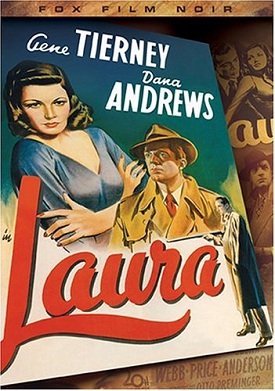 Laura is one of the most perfect movies ever made.
Laura is one of the most perfect movies ever made.  The slim volume is a handsome book that includes an in-depth discussion of the novel, the film and Caspary’s life.
The slim volume is a handsome book that includes an in-depth discussion of the novel, the film and Caspary’s life.

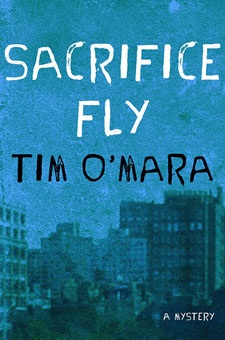
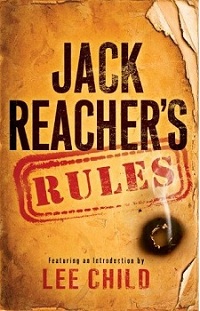

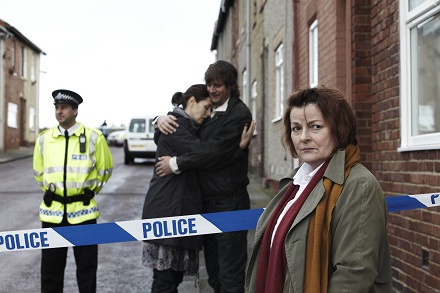
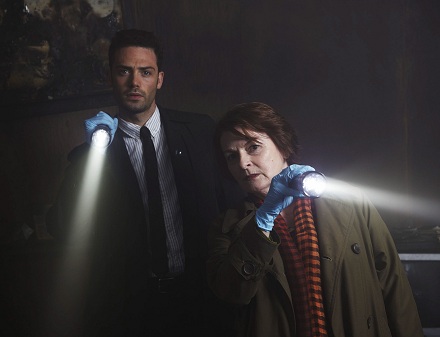
 “Hidden Depths,”
“Hidden Depths,”
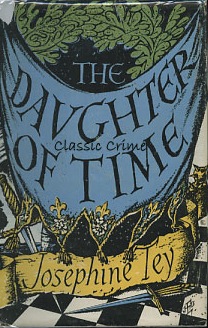 From his bed, the detective undertakes what is, in essence, a murder investigation into the distant past—and the conclusions he arrives at are fascinating not only for their persuasiveness, but for what they have to say about the nature of truth and the evolution—or manipulation—of historical “fact.”
From his bed, the detective undertakes what is, in essence, a murder investigation into the distant past—and the conclusions he arrives at are fascinating not only for their persuasiveness, but for what they have to say about the nature of truth and the evolution—or manipulation—of historical “fact.” As the late critic William DeAndrea pointed out, “Surrounded by six tough guys, Mannix (or a zillion other hardboiled dicks from literature, film, radio, and television) would fight it out with them. Rockford might pretend to faint.”
As the late critic William DeAndrea pointed out, “Surrounded by six tough guys, Mannix (or a zillion other hardboiled dicks from literature, film, radio, and television) would fight it out with them. Rockford might pretend to faint.” Where previous gumshoes had been mostly courageous lone knights fighting for justice and honor, obsessed with the truth, Jim was a con artist with a slick spiel and an occasionally slippery code of ethics who would rather go fishing, and had real problems with playing by the rules. An ex-con (not an ex-cop) who’d served five years in San Quentin before receiving a full pardon, he kept his rarely used gun in a cookie jar, a small press in his Firebird’s backseat to print instant business cards to go with his numerous scams, and lived in a trailer parked on the beach in Malibu. And he was no tough guy.
Where previous gumshoes had been mostly courageous lone knights fighting for justice and honor, obsessed with the truth, Jim was a con artist with a slick spiel and an occasionally slippery code of ethics who would rather go fishing, and had real problems with playing by the rules. An ex-con (not an ex-cop) who’d served five years in San Quentin before receiving a full pardon, he kept his rarely used gun in a cookie jar, a small press in his Firebird’s backseat to print instant business cards to go with his numerous scams, and lived in a trailer parked on the beach in Malibu. And he was no tough guy.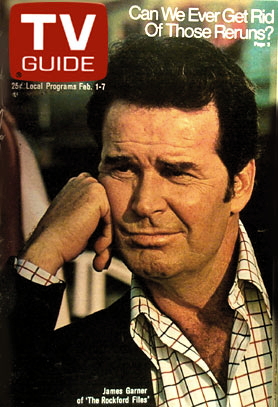 There were other great characters who appeared off and on throughout Rockford’s six year run (and a subsequent spate of made-for-TV movies from CBS in the 1950s), like tough-talking Gandolph Fitch (Isaac Hayes), Rockford’s hot-tempered former cellmate who could never quite get Jim’s name right; John, the former outlaw biker and disbarred criminal lawyer who gave Jim legal advice; and Meghan, the fiercely independent blind psychologist who near the end of the series seemed like Jim’s one true love. Then there was sharp-tongued hooker Rita Capkovic (Rita Moreno), determined to go straight, who came to Rockford for help several times (and ended up grabbing an Emmy for her troubles).
There were other great characters who appeared off and on throughout Rockford’s six year run (and a subsequent spate of made-for-TV movies from CBS in the 1950s), like tough-talking Gandolph Fitch (Isaac Hayes), Rockford’s hot-tempered former cellmate who could never quite get Jim’s name right; John, the former outlaw biker and disbarred criminal lawyer who gave Jim legal advice; and Meghan, the fiercely independent blind psychologist who near the end of the series seemed like Jim’s one true love. Then there was sharp-tongued hooker Rita Capkovic (Rita Moreno), determined to go straight, who came to Rockford for help several times (and ended up grabbing an Emmy for her troubles). How many times have we heard how writing can be therapeutic? That creating fiction—or reading fiction—can get us through some of the worst times of our lives.
How many times have we heard how writing can be therapeutic? That creating fiction—or reading fiction—can get us through some of the worst times of our lives. 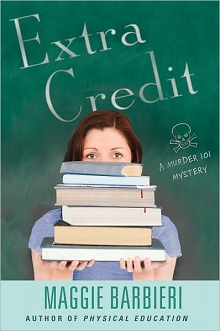 From 2005 to 2008, smack in the middle of writing her series, Barbieri battled malignant melanoma, not once, but twice. Her outlook was considered dire as her cancer had progressed to Stage III with Stage IV being the deadliest.
From 2005 to 2008, smack in the middle of writing her series, Barbieri battled malignant melanoma, not once, but twice. Her outlook was considered dire as her cancer had progressed to Stage III with Stage IV being the deadliest.

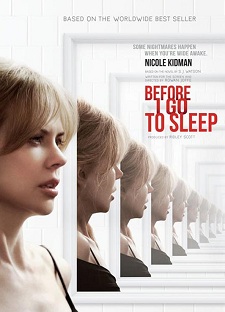
 The death in January 2012 of Reginald Hill, at the age of 75, has robbed crime fiction of a towering figure, one of the outstanding British mystery writers of the past half century.
The death in January 2012 of Reginald Hill, at the age of 75, has robbed crime fiction of a towering figure, one of the outstanding British mystery writers of the past half century. I first met Reg and Pat at the inaugural meeting of the Northern Chapter of the Crime Writers’ Association, at Boroughbridge in North Yorkshire in 1987. At that time, I was working on my first novel, and was eligible for membership only on the strength of nonfiction that I’d published. I didn’t know any crime writers, and approached that meeting with much trepidation. But I was lucky: the people there could not have been kinder to me. It was a small gathering—Reg dubbed us “the few”—but it included not only Reg and Pat, but another doyen of the genre who would, like Reg, go on to win the CWA Cartier Diamond Dagger, Robert Barnard, and his wife Louise, as well as Peter Walker, whose books sourced Heartbeat, one of the most commercially successful British television series of the past 20 years, and Peter and Margaret Lewis, distinguished biographers of Eric Ambler and Ngaio Marsh, respectively. All very memorable and exciting for a writer (and passionate crime fan) at the start of his career.
I first met Reg and Pat at the inaugural meeting of the Northern Chapter of the Crime Writers’ Association, at Boroughbridge in North Yorkshire in 1987. At that time, I was working on my first novel, and was eligible for membership only on the strength of nonfiction that I’d published. I didn’t know any crime writers, and approached that meeting with much trepidation. But I was lucky: the people there could not have been kinder to me. It was a small gathering—Reg dubbed us “the few”—but it included not only Reg and Pat, but another doyen of the genre who would, like Reg, go on to win the CWA Cartier Diamond Dagger, Robert Barnard, and his wife Louise, as well as Peter Walker, whose books sourced Heartbeat, one of the most commercially successful British television series of the past 20 years, and Peter and Margaret Lewis, distinguished biographers of Eric Ambler and Ngaio Marsh, respectively. All very memorable and exciting for a writer (and passionate crime fan) at the start of his career. Luckily, Reg managed to terminate his contract with Yorkshire Television, and entered into a new deal with the BBC, who engaged high-quality scriptwriters such as Alan Plater and Malcolm Bradbury and cast two fine actors, Warren Clarke and Colin Buchanan, in the key roles. Reg invited me to the screening for the press at the Royal Society for the Arts in London, and I took the day off work to travel down: the occasion was great fun, and it was immediately obvious that the BBC had got the characters and story lines right. The rest is history: Dalziel and Pascoe became a fixture on British screens for years and also enjoyed popularity overseas. But this success, very welcome as it was, did not affect Reg. He regarded what happened on the TV as wholly separate from what happened in the books and he wanted to focus on continuing to write the best novels of which he was capable without distraction. Much as he admired the actors’ work, he once said he’d stopped watching the later series, which were no longer based on his own books.
Luckily, Reg managed to terminate his contract with Yorkshire Television, and entered into a new deal with the BBC, who engaged high-quality scriptwriters such as Alan Plater and Malcolm Bradbury and cast two fine actors, Warren Clarke and Colin Buchanan, in the key roles. Reg invited me to the screening for the press at the Royal Society for the Arts in London, and I took the day off work to travel down: the occasion was great fun, and it was immediately obvious that the BBC had got the characters and story lines right. The rest is history: Dalziel and Pascoe became a fixture on British screens for years and also enjoyed popularity overseas. But this success, very welcome as it was, did not affect Reg. He regarded what happened on the TV as wholly separate from what happened in the books and he wanted to focus on continuing to write the best novels of which he was capable without distraction. Much as he admired the actors’ work, he once said he’d stopped watching the later series, which were no longer based on his own books.
 Joe Sixsmith Novels
Joe Sixsmith Novels  One can search the entire annals of crime and mystery fiction and find no lead character as unpleasant, as morally ambiguous, or as downright disturbing as the "Mystery Man of New York,” Randolph Mason.
One can search the entire annals of crime and mystery fiction and find no lead character as unpleasant, as morally ambiguous, or as downright disturbing as the "Mystery Man of New York,” Randolph Mason.
 The most interesting thing about the new Randolph Mason is his decidedly Holmesian demeanor (though he did have a brief Sherlock-esque moment in the novella “Once in Jeopardy,” from The Clients of Randolph Mason, in which he barked to a client: “Give me the facts just as they occurred. You may reserve your melodrama for purposes of copyright”). In Corrector of Destinies Mason is back on his feet financially and conducting business out of a run-down mansion on Broadway, near Wall Street, which was willed to him by a former client. He shares the house with two Italian servants: a man named Pietro, whom Mason actually likes, and Pietro’s wife Francesca.
The most interesting thing about the new Randolph Mason is his decidedly Holmesian demeanor (though he did have a brief Sherlock-esque moment in the novella “Once in Jeopardy,” from The Clients of Randolph Mason, in which he barked to a client: “Give me the facts just as they occurred. You may reserve your melodrama for purposes of copyright”). In Corrector of Destinies Mason is back on his feet financially and conducting business out of a run-down mansion on Broadway, near Wall Street, which was willed to him by a former client. He shares the house with two Italian servants: a man named Pietro, whom Mason actually likes, and Pietro’s wife Francesca.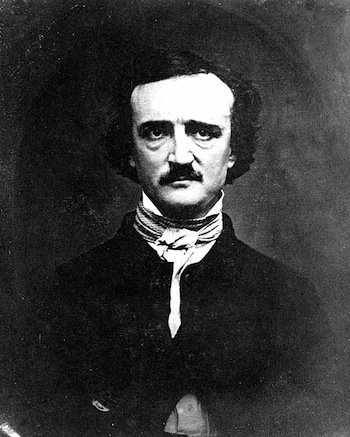 A book of short stories that define modern detective fiction—the one that started it all.
A book of short stories that define modern detective fiction—the one that started it all.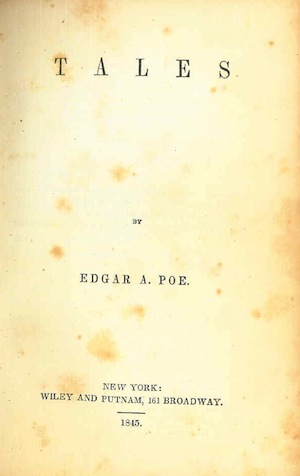 Poe’s Tales is an unassuming little book. My copy is rebound in brown morocco, but it is a first edition, first printing, with the elusive half title. Published in wrappers by Wiley and Putnam in Philadelphia in 1845, a copy in the form it originally appeared is virtually unobtainable today. rebound copies, however, do come to light once in a great while. Coincidently, Peter Stern just listed a copy bound together with a first edition of The Raven for $37,500. A rebound copy by itself would have to bring about half that.
Poe’s Tales is an unassuming little book. My copy is rebound in brown morocco, but it is a first edition, first printing, with the elusive half title. Published in wrappers by Wiley and Putnam in Philadelphia in 1845, a copy in the form it originally appeared is virtually unobtainable today. rebound copies, however, do come to light once in a great while. Coincidently, Peter Stern just listed a copy bound together with a first edition of The Raven for $37,500. A rebound copy by itself would have to bring about half that.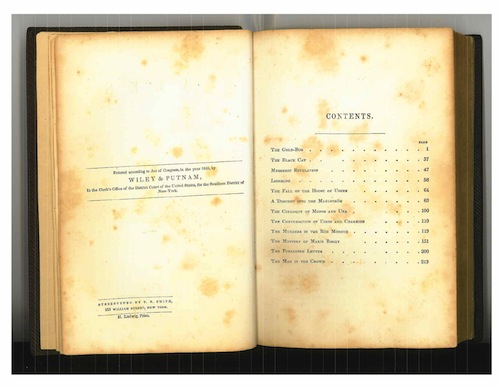 TALES
TALES  Alfred Hitchcock has never been hotter.
Alfred Hitchcock has never been hotter.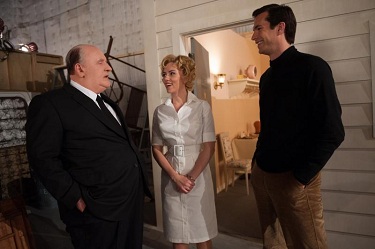 Hitchcock was, to say the least, an odd person, as shown in Donald Spoto’s 1999 biography and in The Girl, directed by Julian Jarrold. Controlling, vengeful, fearful, obsessive, witty, voyeuristic were just a few of his personality quirks, and quite possibly his better traits.
Hitchcock was, to say the least, an odd person, as shown in Donald Spoto’s 1999 biography and in The Girl, directed by Julian Jarrold. Controlling, vengeful, fearful, obsessive, witty, voyeuristic were just a few of his personality quirks, and quite possibly his better traits. 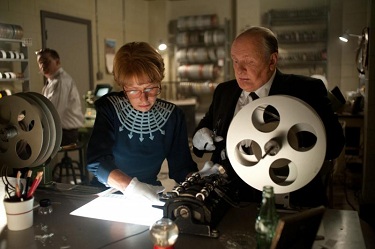 The superb acting and efficient directing completely immerse the audience in this enthralling tale about a unique couple and the making of a landmark movie. Hitchcock is based on the book Alfred Hitchcock and the Making of Psycho by Stephen Rebello.
The superb acting and efficient directing completely immerse the audience in this enthralling tale about a unique couple and the making of a landmark movie. Hitchcock is based on the book Alfred Hitchcock and the Making of Psycho by Stephen Rebello. Hitch
Hitch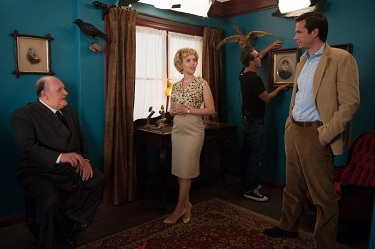 Anthony Hopkins gives more than his usual spot-on performance as
Anthony Hopkins gives more than his usual spot-on performance as 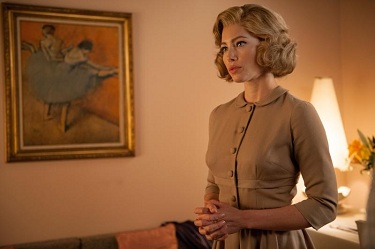 That wasn’t the case with Vera Miles, quietly and beautifully played by Jessica Biel. Hitch proclaimed Miles to be “the new Grace Kelly,” put her under personal contract and cast her opposite Henry Fonda in The Wrong Man. Miles was to have been the lead in Vertigo, but her pregnancy caused too many delays and opened the door for Kim Novak. Hitch never forgave that Miles choose motherhood and her husband over stardom, which is made painfully obvious in Hitchcock.
That wasn’t the case with Vera Miles, quietly and beautifully played by Jessica Biel. Hitch proclaimed Miles to be “the new Grace Kelly,” put her under personal contract and cast her opposite Henry Fonda in The Wrong Man. Miles was to have been the lead in Vertigo, but her pregnancy caused too many delays and opened the door for Kim Novak. Hitch never forgave that Miles choose motherhood and her husband over stardom, which is made painfully obvious in Hitchcock.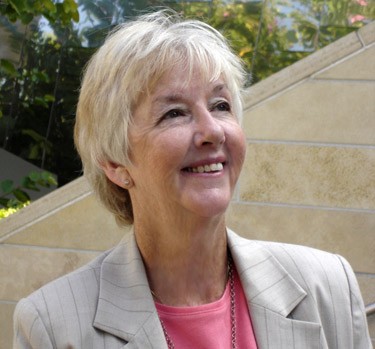 Rhys Bowen on Kenneth Grahame, Nicole Mones, and her own sixth book The Twelve Clues of Christmas.
Rhys Bowen on Kenneth Grahame, Nicole Mones, and her own sixth book The Twelve Clues of Christmas. The rat’s description of what’s in the picnic basket—cold ham, cold tongue, cold beef, pickled gherkins, salad, french rolls, cress sandwiches, potted meat, ginger beer—sounds like perfection to me. I think picnics are one of my favorite meals, sprawling on a rug in an idyllic setting and lazily munching on another cold shrimp or bunch of grapes.
The rat’s description of what’s in the picnic basket—cold ham, cold tongue, cold beef, pickled gherkins, salad, french rolls, cress sandwiches, potted meat, ginger beer—sounds like perfection to me. I think picnics are one of my favorite meals, sprawling on a rug in an idyllic setting and lazily munching on another cold shrimp or bunch of grapes.




 Dennis Lehane
Dennis Lehane That’s the same approach the excellent HBO series
That’s the same approach the excellent HBO series 


